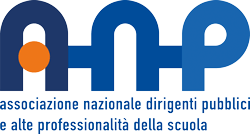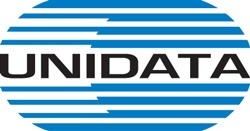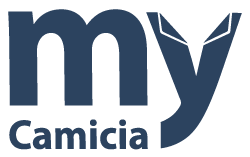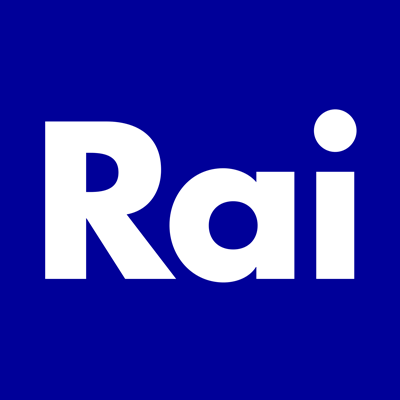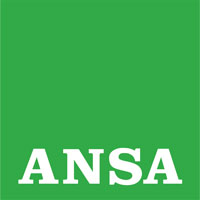Maker Faire Rome partners with DIDI Dubai in the name of Circular Economy
A design workshop with DIDI – Dubai Institute of Design and Innovation, will envision the future of Eni’s installation at the Italy Pavilion at Expo 2020 Dubai
Expo 2020 Dubai is a World Expo hosted by Dubai in the United Arab Emirates.
The first World Expo ever hosted in the Middle East, Africa and South Asia (MEASA) region, Expo 2020 Dubai is getting ready to welcome the world later this year. After being postponed as a result of the pandemic, the event was rescheduled for 2021 and will open to the public from October 1 through March 31, 2022.
With the first event held in 1851, and now presented every five years, the Expo takes place around the world, showcasing the possibilities of new ideas and technologies.
The event is a festival of human ingenuity; through the theme of ‘connecting minds, creating the future’, Expo 2020 Dubai will showcase the best examples of collaboration, innovation, and cooperation from around the globe.
With Expo set to open right the week before, Maker Faire Rome – which will happen October 8-10 – takes a closer look at some way to obey its theme and embark in a challenge which is daring and hazardous
Read in full below to get to know more on the workshop itself and from the partners, architects and designers involved.
Some background
At Maker Faire Rome, we believe in the power of design and creativity to transform society. Money, governments or science can’t solve complex global issues on their own. We need fresh ideas, alternative strategies and provocative thoughts.
At our annual event in Rome, Italy, we invite speakers from all over the world to share their vision. Throughout the year, we strive to be the perfect place for makers, designers and creatives to businesses, industries, NGO’s and governments who aim to start using design innovation. In workshops, speed dates, design jams and masterclasses attendees are challenged to actively participate.
Expo 2020 Dubai, in that sense, is mouthwatering.
At Expo 2020 Dubai an entire section will be dedicated to “meet people making our world brighter” and to prove that “innovation come from anywhere, to everyone”. We bet it sounds familiar to all of our followers.
On the other side, the Italy Pavillion for Expo 2020 Dubai – that sees the involvement of Carlo Ratti, Italo Rota, Matteo Gatto and F&M Ingegneria – will use architecture for a creative and innovative presentation of “beauty that connects people”. It will offer visitors an unforgettable experience, presenting to the world the multidisciplinary skills, talent and ingenuity that can act to promote new educational, professional and business opportunities. Situated in the Opportunity District, due to inspire visitors to act for a better world, the pavilion transforms discarded food and recycled material with the creative expertise of the technical partner Mapei to create circular architecture, in which structures are re-purposed.


“What goes around comes around”
Carlo Ratti and Italo Rota, architects and co-designers of the Italy Pavilion, developed the concept of “circular architecture”: in line with the theme of sustainability, which is key to the Universal Expo, this model assures that limited resources are fed back into the economy after being used instead of being wasted.
“Beauty connects People” is the Pavilion’s theme, in which aesthetics is wedded with sustainability and natural elements. The suspended walkways inside the exhibition space that cover a total area of 1,500 square metres, are coated with dried orange peels and coffee beans ground into powder.
More experimental materials have been included in the project, such as an algae installation that will purify the air by consuming the carbon dioxide emitted by visitors and convert it into oxygen. Recycled plastic extracted from the sea is knit into nautical ropes for a total length of 70 km which decorate the 27-metre-high pavilion façade.
The concept is so brilliantly oriented towards “circularity” that Gulf News, one of the major English-language newspapers in the Arab world, stress it even in the opening lines of a special report dedicated to the Italy Pavilion.

Could we, as Maker Faire Rome, miss the chance to connect with this part of the world and with the people that will be visiting Expo 2020? Of course not, and this is where the collaboration with DIDI – Dubai Institute of Design and Innovation, was born.

About DIDI
In collaboration with Massachusetts Institute of Technology (MIT) and The New School’s Parsons School of Design, Dubai Institute of Design and Innovation (DIDI) is a private, non-profit university, established to address the growing need for talented designers and innovators in the UAE and beyond – today’s students who will be tomorrow’s innovators.
Global in outlook, bold in approach – right like Maker Faire Rome – DIDI instills students with the confidence to take risks, push boundaries and challenge ways of thinking and making.
With its first intake in 2018, DIDI is focused on nurturing, mentoring and creating the next generation of designers, and its those designers we decided to involve in one of the most daring challenges one could expect.

“Braiding the future”
“Braiding the Future” is the workshop Maker Faire Rome built with DIDI: a unique chance to involve excellent students and amazing speakers, and belnd their respective skils thanks to a team of extremely valuable facilitators, professors and professionals from DIDI.
The 4-day workshop will focus on raising awareness about the United Nations Sustainable Development Goals (SDG) and discuss their applicability locally and internationally. Themed around sustainable idea generation, 12 students from the Dubai Institute of Design and Innovation (DIDI) will explore the UN SDGs and stimulate interprofessional problem solving by envisioning and designing the future of the Eni installation created by Carlo Ratti Associati (CRA) for the Italian Pavilion @ Expo Dubai, “Innovation makes everything possible”.
The installation
The installation focuses on new ways of using CO2 to produce valuable nutraceutical and food products. The project was designed by the architectural and innovation firm CRA-Carlo Ratti Associati and Italo Rota and gives an artistic interpretation of the intensified CO2 biofixation process that was developed in Eni Research Centre for Renewable Energies and the Environment.
The installation is suspended at full height over a body of water. It recreates microalgae cultivation using a spectacular cascade of up to 20 metres long technological vines.


Through each of the LED lit lianas flow the microalgae: the see-through circuit therefore becomes a spectacular exhibition of microalgae biologic process and growth in the photobioreactor where, feeding on CO2, these unicellular organisms produce high-value nutritional compounds and more. The multilayer photobioreactor pilot plant will also be on display, created from Eni’s collaboration with the Turin Polytechnic and a network of Italian startups.
About Eni
Eni is a global energy company that is changing direction to become a leader in the production and sales of decarbonized products. Eni is also the main partner of Maker Faire Rome and the Official Platinum Sponsor of the Italian Pavilion at the Expo Dubai.
About the workshop
The workshop will be conducted by DIDI faculty in collaboration with a team of experts, facilitators, and guest lecturers from industry partners from Italy; among them, Hani Asfour, dean at DIDI, Mohammad Abdullah, president at DIDI, Luisa Lavagnini, Head of Research & Technological Innovation at Eni, Barbara Marcotulli, Open Innovation Program Manager at Innovacamera and Maker Faire Rome; Carlo Ratti, Director of MIT Senseable City Lab and founding partner at Carlo Ratti Associati.
The goal of the workshop is to find ideas and solutions to give new life to the algal braids once the exhibition semester is over. Divided into 4 groups the participants will create 4 design proposals.
The Eni installation created by Carlo Ratti Associati is an 85sqm water mirror located at the entrance to the VIP area and focuses on the algal biofixation of CO2, a visual hook to tell all of Eni‘s innovation and research to build a low carbon future. The project consists of 48 algal lianas, 1 km long, produced with recycled and 100% recyclable PVC, 2 LED screens immersed in the water, a bioreactor, and a laboratory for activities related to the management of algae challenge with a view to circular economies.
At the end of the workshop, a pitch session will let a jury to select the best idea as winning project. The winning project will be officially announced on June 3rd through social media.
Awards
The best project will be digitally displayed at Expo 2020 Dubai, in the Eni area within the Italy Pavillion. Besides, it will be also exhibited – onsite or online – at Maker Faire Rome 2021, which is due oct 8-10, 2021. Should Maker Faire Rome be held onsite, the winning team will also get the chance to travel to Rome to attend Maker Faire Rome 2021.
All teams will get full coverage for their effort and work through Eni, Maker Faire Rome and Italy @ Expo 2020 Dubai through press and social media channels.
Why is circular economy so important
“Looking beyond the current take-make-waste industrial model, a circular economy aims to redefine growth, focusing on positive society-wide benefits. It entails gradually decoupling economic activity from the consumption of finite resources, and designing waste out of the system. Underpinned by a transition to renewable energy sources, the circular model builds economic, natural, and social capital. It is based on three principles:
- Design out waste and pollution
- Keep products and materials in use
- Regenerate natural systems
In a circular economy, economic activity builds and rebuilds overall system health. The concept recognises the importance of the economy needing to work effectively at all scales – for large and small businesses, for organisations and individuals, globally and locally” (Ellen McArthur Foundation)
What design can do
From the re-evaluation of product design methodology to the complete overhaul of longstanding business models, today’s forward-thinking designers are starting to look at how to solve tomorrow’s problems in a more responsible way.
Early studies reveal some interesting insights that may have ignited this key shift. It is reported that three out of every four decisions made regarding final materials and manufacturing processes take place during a product’s design phase, whilst over 80% of the ecological and economic costs are incurred before it’s even manufactured.
What this tells us is that design has a pivotal role to play in the way that products and services are made and used, and should therefore be equally crucial in catalyzing a transition towards a more resource-efficient economy.
As a result, a new model has been born — one that strives to cut down on the misappropriation of energy and the mismanagement of resources whilst simultaneously seeking, wherever possible, to repurpose, refurbish and repair products, as well as reimagining the materials and processes from which they were conceived.
“Gone are the days of sustainable design. Now we have to learn to think about life cycles, and designers have a key role to play.”
— Nat Hunter, Co-Director of Design at The RSA
Design goes circular
Circular Design is about: ‘borrowing’ resources instead of over-exploiting them”; designing products and services in such a way that their components can be reused or reapplied in new products or services.
Transitioning to a circular economy does not only amount to adjustments aimed at reducing the negative impacts of the linear economy. Rather, it represents a systemic shift that builds long-term resilience, generates business and economic opportunities, and provides environmental and societal benefits.
Design and designers are crucial to the development of this new economic model; furthermore, this model facilitates education for sustainability and enhances employability: exactly what all parties involved in this workshop are committed to.
[Special kudos to Carlo Ratti, Italo Rota, Eni and all the partners involved that, even before showing the world the amazing installation the workshop will be working on, have agreed to “rethink” it: it is never too early to start being “circular” and engage others in do so]
Intrigued? Follow us!
Find workshop hightlights and results – and winners! – on our social media handles @MakerFaireRome @DIDI @Eni
From May 31st through June 3rd, we will keep you posted about the creativity, the ingenuity and the brilliant idea the participants will contribute to the challenge, and about the amazing results they will deliver.
Maker Faire Rome – The European Edition has been committed since eight editions to make innovation accessible and usable to all, with the aim of not leaving anyone behind. Its blog is always updated and full of opportunities and inspiration for makers, makers, startups, SMEs and all the curious ones who wish to enrich their knowledge and expand their business, in Italy and abroad.
Follow us, subscribe to our newsletter: we promise to let just the right content for you to reach your inbox














